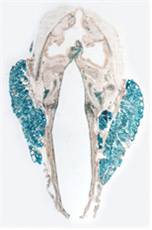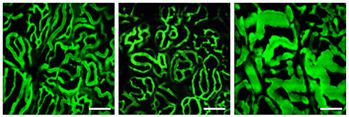주메뉴
- About IBS 연구원소개
-
Research Centers
연구단소개
- Research Outcomes
- Mathematics
- Physics
- Center for Theoretical Physics of the Universe(Particle Theory and Cosmology Group)
- Center for Theoretical Physics of the Universe(Cosmology, Gravity and Astroparticle Physics Group)
- Center for Exotic Nuclear Studies
- Center for Artificial Low Dimensional Electronic Systems
- Center for Underground Physics
- Center for Axion and Precision Physics Research
- Center for Theoretical Physics of Complex Systems
- Center for Quantum Nanoscience
- Center for Van der Waals Quantum Solids
- Chemistry
- Life Sciences
- Earth Science
- Interdisciplinary
- Institutes
- Korea Virus Research Institute
- News Center 뉴스 센터
- Career 인재초빙
- Living in Korea IBS School-UST
- IBS School 윤리경영


주메뉴
- About IBS
-
Research Centers
- Research Outcomes
- Mathematics
- Physics
- Center for Theoretical Physics of the Universe(Particle Theory and Cosmology Group)
- Center for Theoretical Physics of the Universe(Cosmology, Gravity and Astroparticle Physics Group)
- Center for Exotic Nuclear Studies
- Center for Artificial Low Dimensional Electronic Systems
- Center for Underground Physics
- Center for Axion and Precision Physics Research
- Center for Theoretical Physics of Complex Systems
- Center for Quantum Nanoscience
- Center for Van der Waals Quantum Solids
- Chemistry
- Life Sciences
- Earth Science
- Interdisciplinary
- Institutes
- Korea Virus Research Institute
- News Center
- Career
- Living in Korea
- IBS School
News Center
A Culprit of Thyroid's Diseases- How thyroid and its vascular system coordinate themselves and remodel during thyroid disease - A team led by KOH Gou Young, director of the Center for Vascular Research, within the Institute for Basic Science (IBS), in collaboration with Chungnam National University, clarified the molecular mechanism to explain how the thyroid and surrounding vascular system change in the most common form of hyperthyroidism. Published in the EMBO Molecular Medicine journal, these findings provide a potential therapeutic target for thyroid diseases. The thyroid is a highly vascularized organ, found behind the Adam's apple. Some of the functions of the thyroid are regulated by a hormone, called thyrotropin, produced in the brain. Graves' disease, the most common cause of hyperthyroidism in the United States, affects both the thyroid and the surrounding vascular network. In this disease, the thyroid produces an excessive amount of hormones and the capillaries become denser. "Previous studies show that abnormalities in thyroid glands and surrounding vasculature are interconnected, we wanted to understand how this happens, at the molecular level," explains Koh. Using animal models that simulate Graves' disease, IBS scientists uncovered the biological pathway contributing to this disorder. They found that the culprit is the vascular endothelial growth factor A (VEGF-A). This protein is involved in forming new vessels around the thyroid, and regulating the hormonal exchange happening between these vessels and the thyroid, through very small pores called fenestrae (from Latin 'window').
Upon stimulation with the thyrotropin hormone, VEGF-A is produced by the thyroid gland and as a result, the thyroid enlarges and the walls of the capillaries (constituted mainly by endothelial cells) increase the expression of VEGFR2, the receptor for VEGF-A.
By blocking VEGFR2, IBS scientists could inhibit enlargement of the thyroid and stop vascular remodeling. "Our findings identify VEGFR2 blockade as a novel therapeutic avenue for targeting thyroid disease associated with thyrotropin," explains Koh. Concurrently, the research team could also exclude other molecular pathways. For example, they found that the angiopoietin-Tie2 pathway, fundamental in other tissues like the eyes and brain, does not play a major role in remodeling the vasculature of the thyroid gland. Finally, VEGFR3 was ruled out from the indispensable pool of proteins that maintain thyroid vascular integrity. Letizia Diamante Notes for editors - References - Media Contact - About the Institute for Basic Science (IBS) |
|||
Center for Vascular ResearchPublication Repository |
|||
|
|
| Next | |
|---|---|
| before |
- Content Manager
- Public Relations Team : Suh, William Insang 042-878-8137
- Last Update 2023-11-28 14:20














